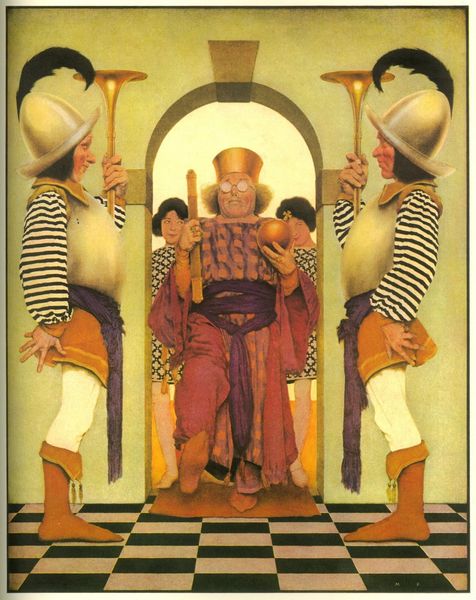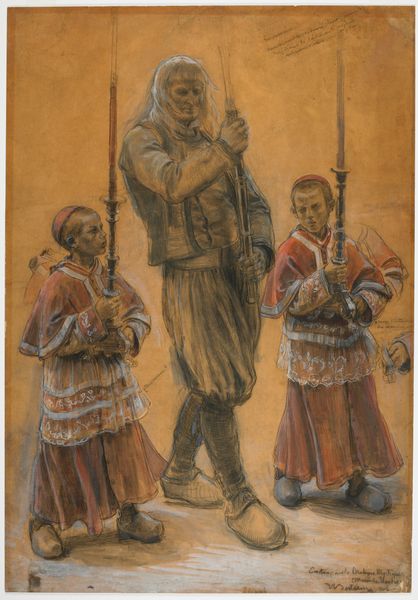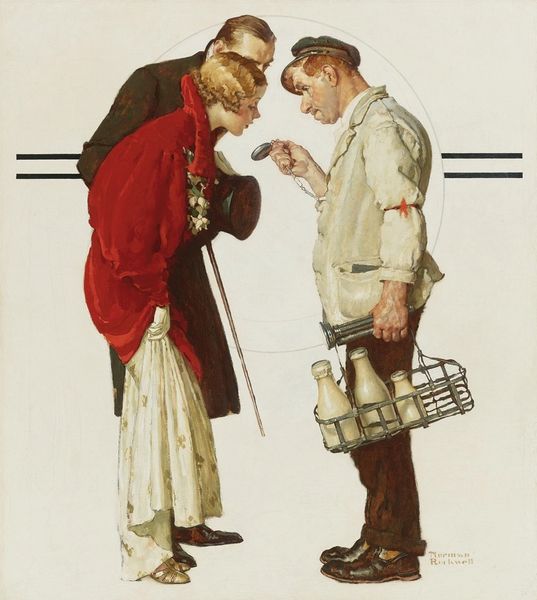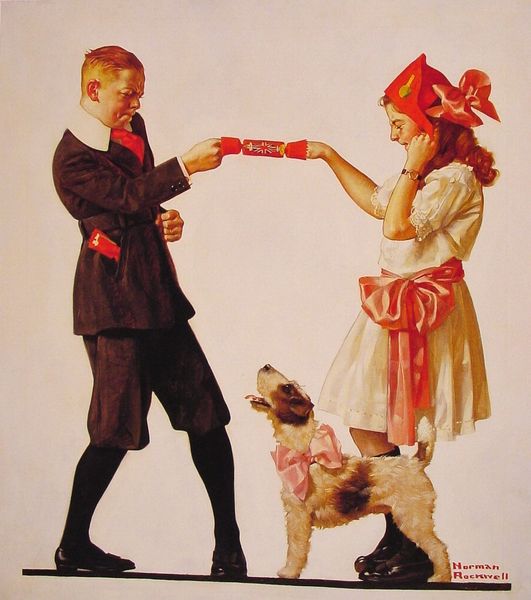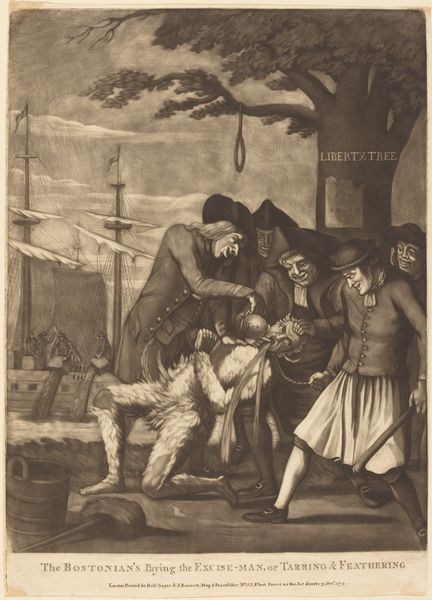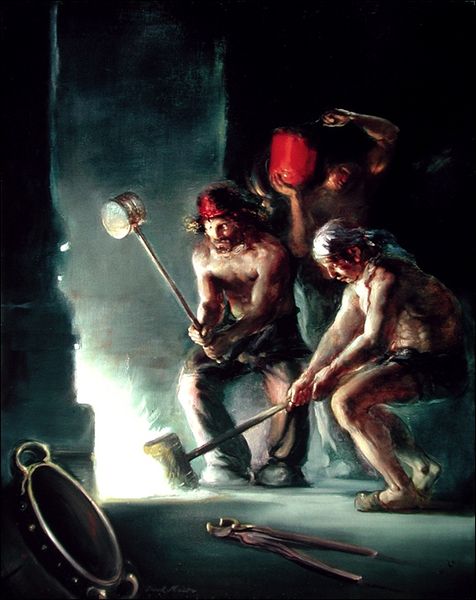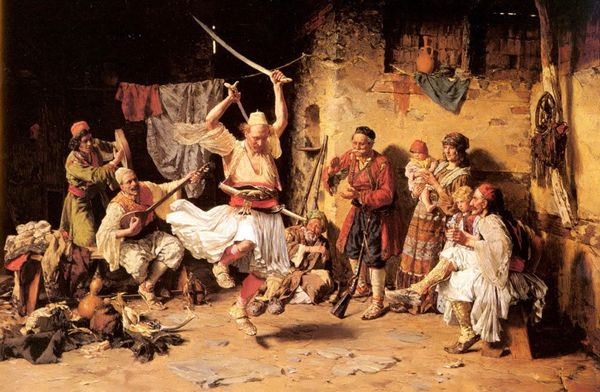
painting, oil-paint
#
portrait
#
painting
#
oil-paint
#
group-portraits
#
genre-painting
#
realism
Copyright: Public domain US
Curator: "Cousin Reginald Plays Pirate" painted in 1917, it's one of Norman Rockwell’s early genre scenes. Editor: My initial impression is of high theatricality—a constructed drama. The lighting is rather stark, highlighting the figures against the blurred, almost indistinct background. Curator: Rockwell uses archetypes masterfully here, playing on deeply rooted cultural myths. Pirates, naturally evoke ideas of adventure, transgression, and freedom from societal norms. The submissive captive creates dramatic tension. Editor: Absolutely. The composition itself is quite interesting. We have the clear visual hierarchy, the accusatory gesture directing our gaze immediately, with those expressive, slightly grotesque faces drawing the eye. Note how the artist’s brushstrokes appear looser towards the edges of the canvas. Curator: This scene feels inherently American. The image brings to mind popular literature of the time like “Treasure Island” reflecting on a culture grappling with rapid modernization and the allure of a romanticized, adventurous past. There's nostalgia, certainly, but also an exploration of youthful imagination. The boys in costumes act out these established roles. Editor: I see your point, it feels highly narrative. I’m particularly intrigued by the color palette: a vibrant splash of reds—in the "pirates'" garments and the suspenders of the captive— pops from a mostly neutral background of ochre and cream, providing contrast which sharpens the visual impact. Curator: Beyond surface readings, consider the historical context, it was created during World War I. These light-hearted paintings perhaps provided much needed emotional relief and reaffirmed values such as brotherhood and imagination during times of extreme conflict and anxiety. Editor: Yes, it operates as a tableau vivant frozen in a key moment of performance and suspense. By simplifying details in certain background areas and by emphasizing gestural qualities within the primary subjects’ features, the artist ensures a sharp yet dreamlike scene unfolds for its viewers. Curator: When viewing it with knowledge of both American art history and popular culture it allows for a deeper appreciation of the symbolism at work—making what at first glance might seem like mere children’s play into something far richer, and resonant. Editor: Exactly, engaging with its design enhances our recognition of how profoundly impactful careful consideration regarding both form and tone might alter how any picture relays its overall theme to curious onlookers like us today.
Comments
No comments
Be the first to comment and join the conversation on the ultimate creative platform.


